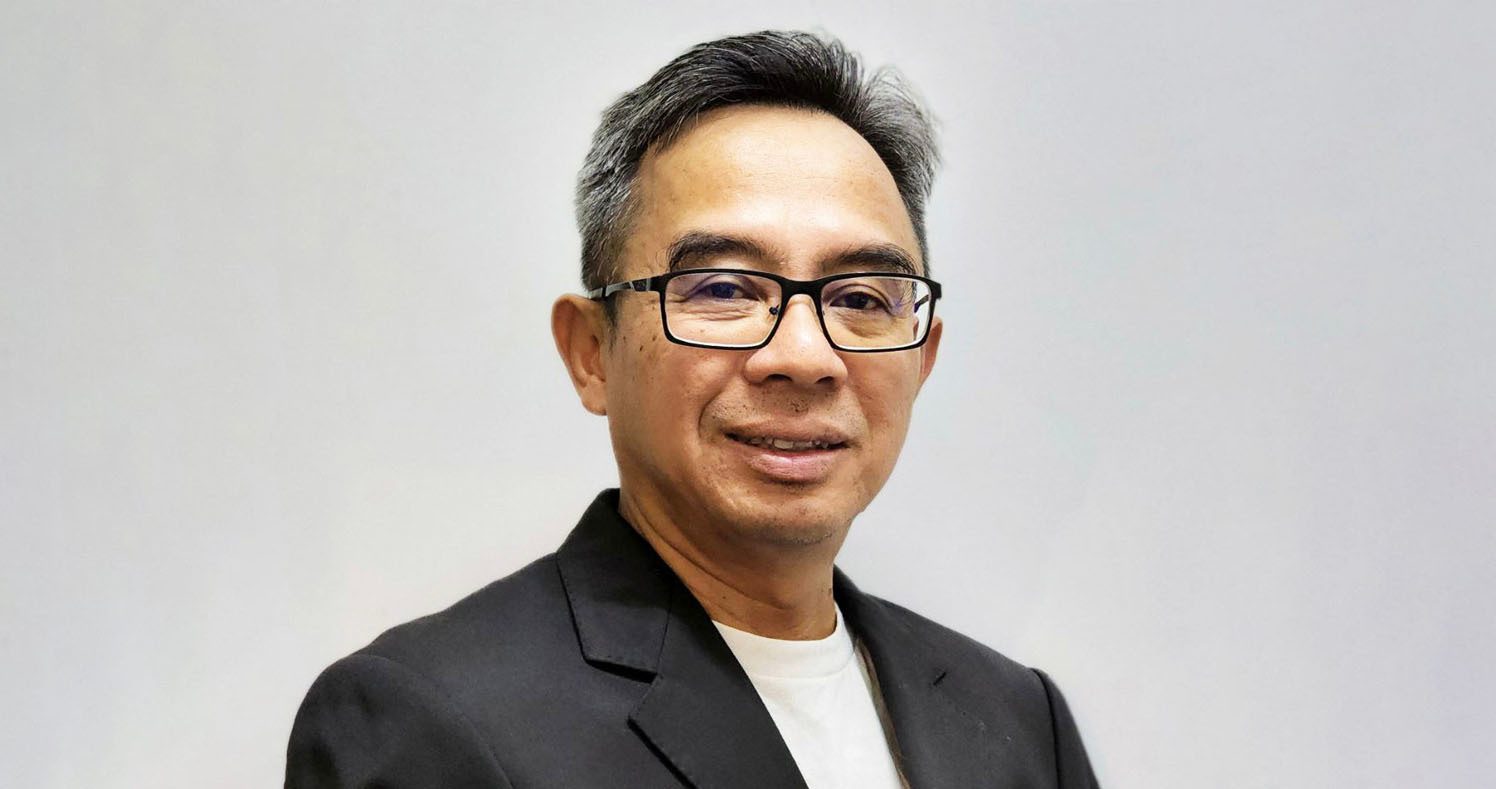Defining a Future
with Automation
A conversation with Andrew Kudless exploring AI and design education
story by Symone Daniels • renderings by Andrew Kudless • December 14, 2022
Across the street from the Gerald D. Hines College of Architecture and Design sits the future Construction Robotics and Fabrication Technologies Lab (CRAFT Lab) under the leadership of director Andrew Kudless, the College’s William D. Kendall Endowed Professor of Design Technologies. Currently, in phase two, the lab will support the Hines College through groundbreaking technologies and research. While the idea of artificial intelligence (AI), the theory and development of computer systems performing duties usually requiring human intelligence, is not new, thanks to recent advances, the world is seeing an influx of AI. Kudless has recently received attention for his article, "Diffused Narratives," published by Gradient Journal, for his perspective on AI and its impact on the design industry. Hines College writer Symone Daniels recently sat down with Kudless to discuss his thoughts on the future of AI.
Symone Daniels: How did living in Japan impact the way you approach architecture?
Andrew Kudless: After graduating from Tulane University in New Orleans, I moved to Japan. It was quite a shock for me because I was not used to seeing anything being built. Most of my professors worked on preservation projects during my studies in such a historic city. When they worked on construction projects, they mostly renovated historic buildings, which is vastly different from creating something new. Despite moving to Japan during a recession, I had never seen so much construction. Everywhere I looked, there was scaffolding covered with construction curtains.
In New Orleans, I was accustomed to a more solid architecture: brick, concrete, and stone. In Japan, it was almost as if the buildings being constructed were made out of fabric and blowing in the wind. It was just beautiful. I was very interested in this kind of architecture that would constantly be changing.
After five years of studying at Tulane, I had become quite burnt out and found that Japan was the cure. I began walking around and taking photos of buildings, and eventually, I became interested in how these buildings worked. I was inspired to start designing more. I began creating just fake projects for myself. For example, I would find an empty site somewhere in the city and then develop a hotel. I would work on that until I was done. There was not an actual client or project, but it was just something I wanted to do. In many ways, this ultimately reignited my interest in architecture.
SD: Your article, "Diffused Narratives," was recently published in Gradient Journal. What inspired you to share your story about your growth as a designer and instructor?
AK: During the summer, I began showcasing images of my work on Instagram. I would include a short post about my ideas on how the software worked and was utilized in the design. As a result, the editor of Gradient approached me about turning my posts into an article. I agreed to the idea because I had been writing a lot recently and wanted to formalize the writing from short social media posts to a long-form article. "Diffused Narratives" also allowed me to explore a non-traditional writing style combining four different narratives.
The first narrative (in black text) is personal – "This is a story spanning two decades of setbacks and growth as a designer and instructor." This narrative shares the struggles I faced along the journey, beginning as a student, developing into an architect, and eventually becoming a professor. The second narrative (in pink text) describes and critiques the technical aspects of AI tools. The third narrative is a comparison between two of the most used AI platforms: Midjourney and Stable Diffusion. Everything on the left-hand side is one Midjourney, and everything on the right is Stable Diffusion. I was interested in understanding the similarities and differences between two different AI models. The fourth narrative is an illustrated biography with fake images. Rather than show images of my work, I wanted to describe it through text prompts that the AIs then used to illustrate it visually. I wanted to talk simultaneously about my experience, my projects, and the technical and ethical aspects of using AIs in architecture and design.
"When we look at the history of automation over the last one hundred years, we see that instead of massive unemployment, automation has led to reasonably stable employment levels and a massive increase in productivity. Some jobs are lost, but roughly the same number of jobs are created in new industries that never previously existed."
SD: How did you go from architecture to AI? How did that transpire?
AK: Although I had been following a lot of the development of AI in general and specifically within the architecture discipline over the last three or four years, I had yet to dive in as it was very technical. And while I know how to code, it was still a leap for me. The change in training AI from three or four years ago to just a year ago is very different. Instead of training on a limited data set, you now train AI on everything. This allows much more creative freedom as the AI “understands” more. It is fantastic on a technical level because you can interact with it in a Discord chat channel and not have to install some esoteric software and code your own model.
In the last year, new platforms began supporting AI at a much more accessible level for the average person, allowing access to non-experts. In architecture, I have had clients who use this with me and like the results. Typically, an architect would want to avoid a client coming to the table with a drawing of what they want. However, AI has broken down some of the borders between designers and non-designers or artists and non-artists, in which architects can get a better glimpse into their client's vision.
SD: How do you see automation impacting the architecture and design industry?
AK: There is a process called design development. This happens before the building is built, when you are just developing the design, and things are constantly changing. In the early phases of concept design, AI can help explore your imagination. Your desires may change as you receive new information from the window manufacturer or new instruction from the city, and perhaps your data even fluctuates. Design development is a form of automation.
In the middle phase of design development, parametric modeling helps structure the project in a way where small modifications can be made that might normally require much work. If something changes in the equation, everything downstream adjusts with it. For example, if you need to change the width of the building, everything is recalculated within the parameters of the changes.
In the final phase, during construction, we can use robotics to help reduce the dirty, dangerous, and dull tasks to make building faster, cheaper, and safer.
SD: What are your thoughts when people talk about robots taking over the future and causing humans to have fewer job prospects?
AK: When we look at the history of automation over the last one hundred years, we see that instead of massive unemployment, automation has led to reasonably stable employment levels and a massive increase in productivity. Some jobs are lost, but roughly the same number of jobs are created in new industries that never previously existed.
Although robotics has been used in the manufacturing industry for decades, they are relatively new to architecture and construction, as we do not benefit from the same scales of production. Instead of producing ten-thousand identical cars or millions of phones, each building is often custom-designed for its client. But recent advances in both the software and hardware of automation make this customization possible.
I think what is beginning to happen is that we are trying to find ways to make the design and fabrication of buildings more efficient – lowering the cost and building them more safely, with fewer people involved in the process. We could build 24 hours a day and deliver much more quickly in the future. Hines College alumni Russell ’93 and Rame ’00 Hruska are already working in this realm. They started a company called boxprefab, an off-site construction company building prefabricated homes from design to completion.
SD: As the Kendall Endowed Professor of Design Technologies and director of the CRAFT Lab, what are your plans for the lab?
AK: Throughout my career, I have been interested in automation to one degree or another. Toward the end of the "Diffused Narratives" article, I tried to articulate that architecture is more complex than it needs to be. The design of buildings is more complicated than it needs to be. The construction of buildings is more rigid than it needs to be. And this makes everything more expensive.
The CRAFT Lab will work on multiple fronts to solve these problems. First, I want to investigate the potential of AI tools to help us explore our imaginations. Second, I want to work with students, colleagues, and industry partners on computational design logics. Using parametric design tools helps streamline the design process from early design to pre-construction. Third, the Lab will be a hub for University researchers developing innovative construction processes through various robotic workflows and new material assemblies.
SD: How will work with AI impact Hines College students?
AK: My goal is to make our students critical users of technology. AI will be one of the most important technologies affecting their careers. Within AI tools and all of the design technologies we teach at the College, I want our students to feel empowered not only because they know how to use them but when not to use them. It is critically important that students can be adaptive and feel comfortable switching from pencil to AI and back as needed in their process. They will continue to experience rapid technological change throughout their careers, so I want them to have the skills and confidence to navigate those changes.
"My goal is to make our students critical users of technology. AI will be one of the most important technologies affecting their careers … It is critically important that students can be adaptive and feel comfortable switching from pencil to AI and back, as needed, in their process."
AI in the Studio
Hines College Professor Roya Plauché shares her thoughts on artificial intelligence software being slowly integrated into the classroom. Software like Midjourney uses computer-generated learning algorithms to help produce images creating a unique opportunity for students to approach the concept of design differently.
SD: What made you want to introduce AI to teach your students in your lesson plans?
Roya Plauché: We introduced Midjourney as an experiment at the beginning phase of our design process. We were seeing text-to-image AI-developed imagery everywhere and wanted to test and learn about the process.
SD: How has using AI in the classroom impacted your students?
RP: It was a great learning experience for the students since none had ever used this tool before. It was a great way to use the generated images as a sketch and ideas generator.
SD: What advice would you give to other professors considering using AI in their classrooms?
RP: New tools are emerging in the profession, and as faculty, we can engage with them differently. These tools are not necessarily replacing previous ones but are different in process and can be used as a complement to traditional ones.
More College of Architecture and Design Stories

"The university life at the Hines College prepared me to apply architecture broadly while emphasizing design projects. I am proud to be part of the technical team in constructing the PETRONAS Twin Towers."

Industrial design student Pedro Sandoval awarded inaugural 2022 John Conrad Student Pinnacle Award for “Blum” chair design from the International Society of Furniture and Design

"The Hines College reinforced and broadened my knowledge in architecture, design, and drafting software."





